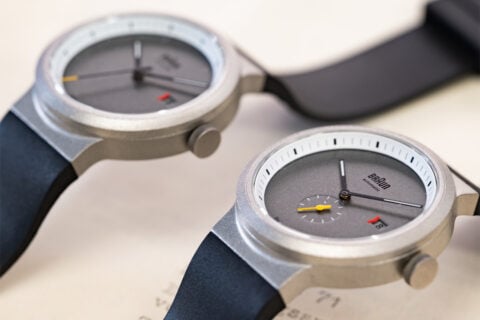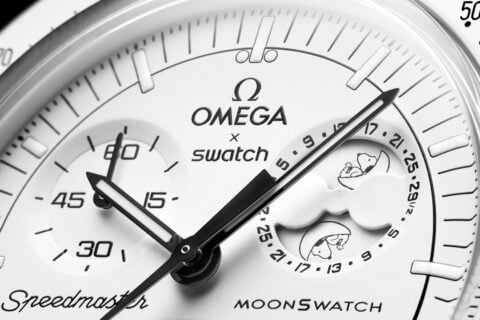“There is usually a clear difference between an object and its environment. When you see a home appliance, you can tell its functionality from its look. The obvious functional exterior often weakens the beauty of a space.” To overcome this failing Japanese designer Kosho Tsuboi employs his “Missing Design” creative concept for creating the Gravity Bluetooth speakers for Meizu.
The concept of “Missing Design” is not just about subtracting, but about organizing and removing the presence of an object, so that it is more in harmony with its surrounding space. Even when it lacks features, it can still enrich the space. The most interesting feature of Meizu’s Gravity wireless speaker is the transparent, off-center prism that serves as both the speaker’s base and the unit’s display screen. Formed as a right-angle triangular pyramid, it uses the principle of reflection to project information directly onto the centre space of the prism. To the naked eye, it appears as if the projected image is floating in mid air due to the use of a new form of plastic membrane called the “HalfMirror” that effectively increases its light transmittance and also filters the background and masks any borders. Using a 92% light transmission material called the Polymethylmethacrylate (referred to as PMMA), the “HalfMirror” is machine processed and multi-polished by CNC, creating a very smooth surface that makes the display more visible and ensures excellent optical refraction. The result emphasizes the suspended, transparent, and bright aesthetic of the projected image from the prism, without also revealing the black body of the speaker enclosure.
For the asymmetrical speaker design and support’s left side sound bias to be more audibly balanced, Meizu’s engineers sought input from the advanced acoustic experts at Dirac as well as help from their speaker supplier to create a custom acoustic program. They discovered that if the two 1.25 inch full-range speakers were made smaller using highly durable Neodymium magnets, the overall performance range of the speakers was improved. Using a passive runway-type radiator and imported rubber edge material to create the two passive resonant diaphragms and dual drive units, the speakers’ dynamic range was widened, resulting in a fuller and richer low-frequency range. Implemented with the latest 5-series chip by Texas Instruments (TI), the total harmonic distortion and noise is a minuscule ≤0.007%.
Finally, Dirac Power Sound optimization is used to restore original music richness. Gravity’s total power output is 20W with a maximum output sensitivity of 92dB. Gravity has further simplified WiFi connection to only three steps while also offering Aux-in and Bluetooth input selection. The product is already raising funds on indiegogo’s crowdfunding website, and is expected to be launched during the second half of this year.






